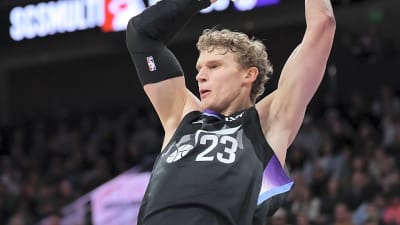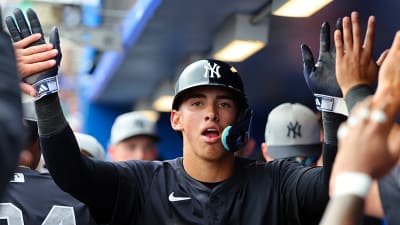
History often repeats in the NBA. Teams usually keep young, talented players on a short leash. That builds frustration, trust fades, and before long, both sides are looking to part ways. Sometimes, the divorce comes naturally, but other times, it turns ugly. Jonathan Kuminga is facing a similar situation to what Ben Simmons had with the Philadelphia 76ers. He wants out, but the team doesn’t let him, and he doesn’t really have a lot of leverage. Let’s take a look at the similarities between the two situations.
Jonathan Kuminga Is Ready to Pull a Ben Simmons
The latest reports on the Jonathan Kuminga situation is that the Warriors have only one offer for a trade with the Sacramento Kings, but they don’t like it. While the Warriors expected more teams to make bids for their young forward, in the end, only the Kings are serious enough. But their offer of Malik Monk and a protected 2030 first-round pick does not work for the Warriors.
That leaves Kuminga with several options. The first is to accept the qualifying offer, sign it sooner, and hope for a better trade at the deadline. He would have to play at a high level to up his value, and it is in the Warriors’ interest to keep his value high. If nothing materializes at the deadline, he can be a free agent next summer. The second option is to sign a two-year deal with the Warriors, which is essentially a one year deal, and he becomes a free agent next summer as well.
How Similar are the Simmons and Kuminga Situations?
There are similarities in the way that both players felt disrespected and unsupported by their team’s management and coaching. Simmons felt that the Sixers didn’t support him after the playoff series against the Atlanta Hawks. His agent told Philadelphia that he doesn’t plan to return to the team. Unlike Kuminga, Simmons was under a long-term contract with Philly and didn’t have leverage. What he did was refuse to play for the team until he got traded. Eventually, the Sixers traded him at the deadline for James Harden.
Kuminga finds himself in a similar situation. Warriors head coach Steve Kerr has previously said he doesn’t believe playing Jonathan will result in wins. That is a huge sign the team doesn’t view him as part of their future.
During his four year stint with the Warriors, Kuminga has been in and out of the starting lineup, received a DNP-coach’s decision, and has had flashes of great play. But that marriage has run its course, and it is definitely time for both sides to part ways. The problem for Kuminga is that he is a restricted free agent. As such, he can only sign with teams with cap space, and there are not many of those around.
Differences Between Simmons and Kuminga
Both Simmons and Kuminga have played four seasons for their team (Simmons didn’t play in his first season due to injury). The difference is that Simmons won the Rookie of the Year award and was a three-time All-Star at the time he requested a trade. Kuminga is far from being an All-Star. Another difference is that Simmons had a long-term contract when he requested a trade. Jonathan has only one year left on his deal.
What Happens Next?
While there are similarities with the Simmons situation, the question now is what happens next with Kuminga? Will his career take off or not? Simmons never sniffed All-Star status after being traded, and he faced injuries that prevented him from playing at a high level.
Kuminga believes he is a star player in this league and wants a chance to prove it. Whether he gets traded this summer, at the deadline, or signs with a new team next offseason, he will get his chance.
More must-reads:
- Six players who could succeed Celtics guard as Sixth Man of the Year
- Five takeaways from the 2025-26 NBA schedule: New rivalries? Challenging the NCAA?
- The 'NBA minutes leaders by season' quiz
Breaking News
Trending News
Customize Your Newsletter
 +
+
Get the latest news and rumors, customized to your favorite sports and teams. Emailed daily. Always free!








